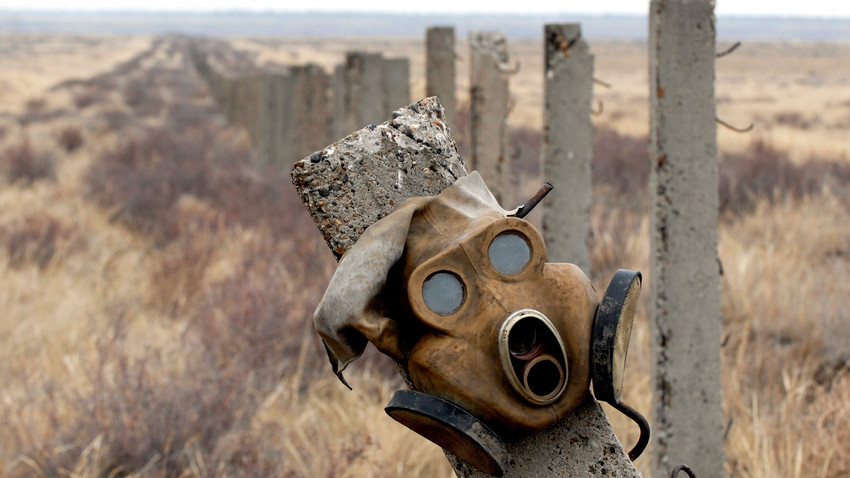
Today the city of Kurchatov in the Kazakh steppes is still a place of secrecy and resembles an atomic ghost town. In order to enter, a government permit is still required. The city was built for the scientific elite during the Soviet period when the population was 50,000.
Getty ImagesAfter the explosion of the first Soviet atomic bomb on Aug. 29, 1949,
In 1949 the first Soviet nuclear bomb known as RDS-1 was detonated at the Semipalatinsk Test Site (“The Polygon”) on the eastern outskirts of Kazakhstan. However, a few years later, Soviet leaders realized that no matter how far they carried out tests from local populations, the environmental consequences would still be catastrophic.
So in
For this kind of nuclear testing, miners create tunnels at the test site (horizontal or sloped tunnels below the ground). Each tunnel is reinforced on the inside so that radiation and nuclear contamination does not penetrate the surface and seep into the soil.
The first Soviet tunnel was dug in 1961 inside a cliff. It was 380 m long and 125 m deep.
After the drilling work was completed, the tunnel was converted into a test chamber and a cart carrying a nuclear warhead that was as powerful as one kiloton of TNT was dragged along the tracks into the chamber (the bomb detonated in Hiroshima in 1945 was 20 times more powerful).
One explosion could increase the pressure inside the chamber to that of several million atmospheres. In order to avoid this, the tunnels were fitted with three additional plugs so that decomposition traces did not reach the surface.
The first plug consisted of a reinforced concrete wall and a crushed stone backfill that was 40 m long. Further down, a pipe was fitted so that a stream of neutrons and gamma radiation could reach sensors on devices that monitored the development of a chain reaction.
The next plug was made of reinforced concrete wedges that were 30 m long. And the last line of "
The
The underground nuclear explosion looked like this
Underground explosions proved to be the most environmentally safe method to use in comparison to sea and atmospheric tests. After the detonation, dosimetrists and workers did not detect any radiation on the surface, and the whole tunnel from the mouth to the third plug remained intact, thereby allowing scientists to extract all necessary data from their devices.
Later it was discovered that nuclear weapons of a certain size could cause man-made disasters and earthquakes. The most powerful underground atomic explosion in history was produced by the U.S. military in 1971 on the uninhabited island of Amchitka (Aleutian Islands, Alaska).
Scientists used a five-megaton thermonuclear bomb to study the seismic effects of a possible similar attack. This explosion triggered a 6.8 magnitude earthquake and raised the ground level by five meters. It also triggered landslides along the coastline and shifted tectonic plates on the island over an area of 300 square km.
To this day, you can find dozens of open radioactive tunnels in former USSR territory. After the collapse of the Soviet
If using any of Russia Beyond's content, partly or in full, always provide an active hyperlink to the original material.
Subscribe
to our newsletter!
Get the week's best stories straight to your inbox